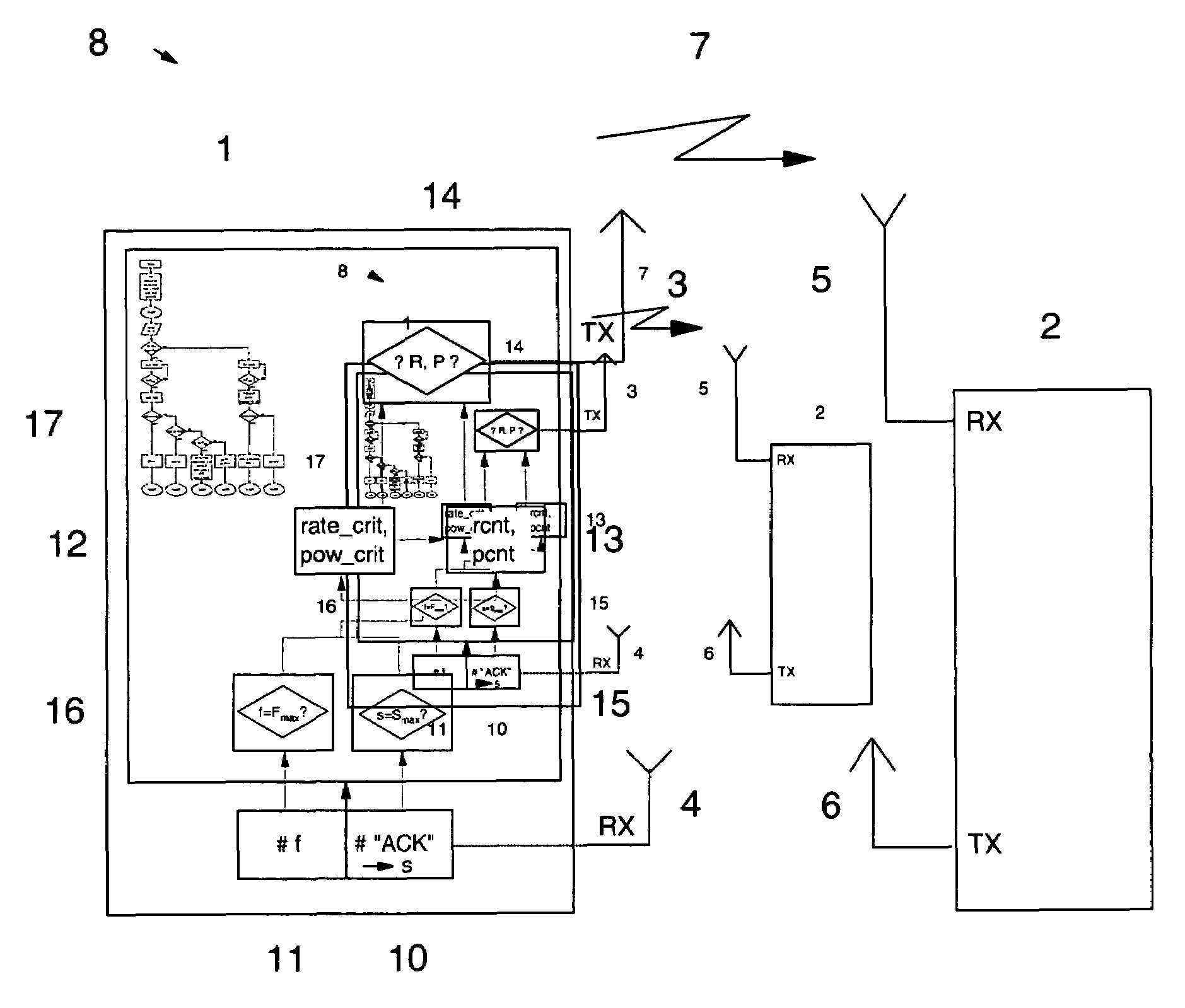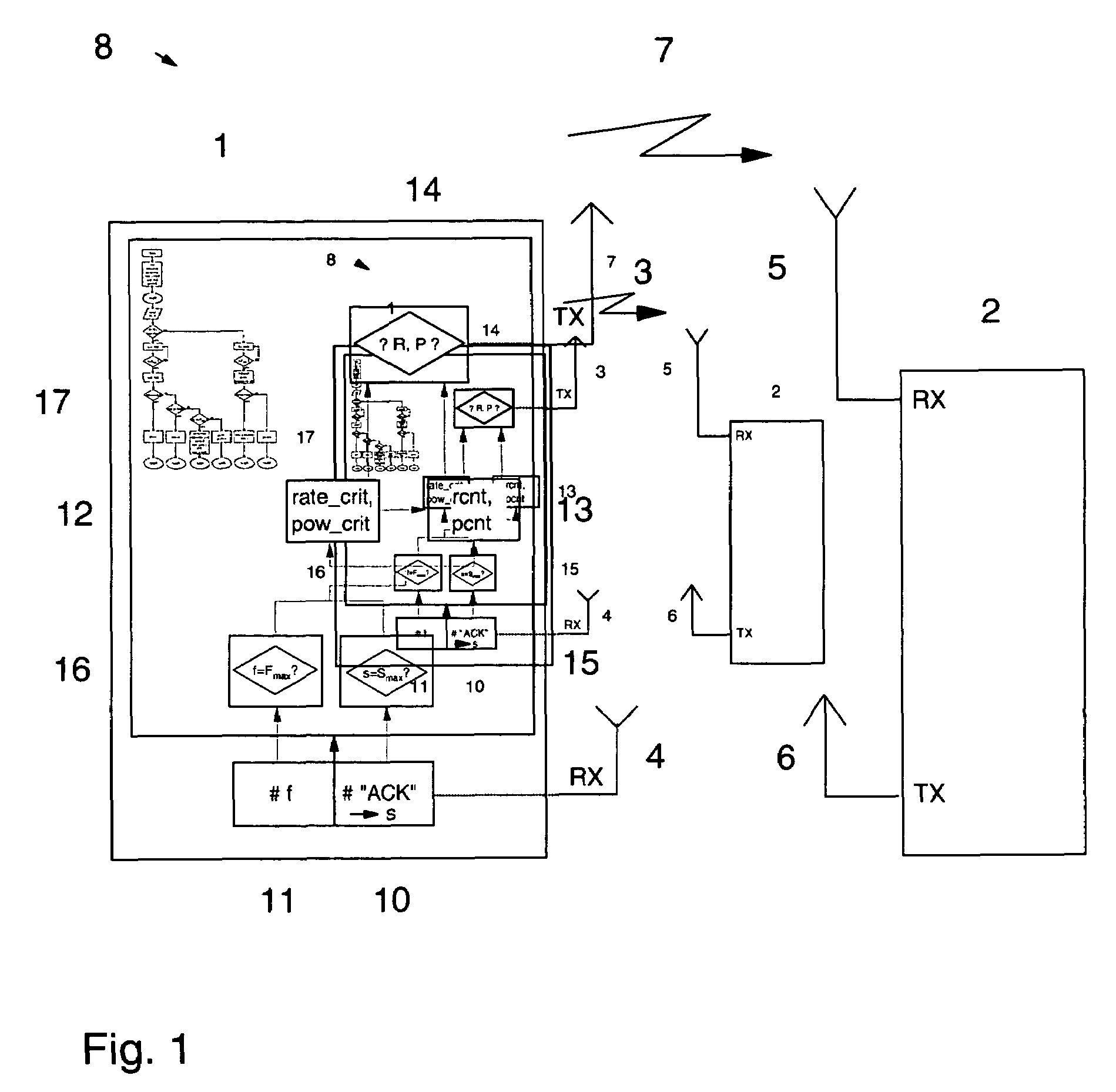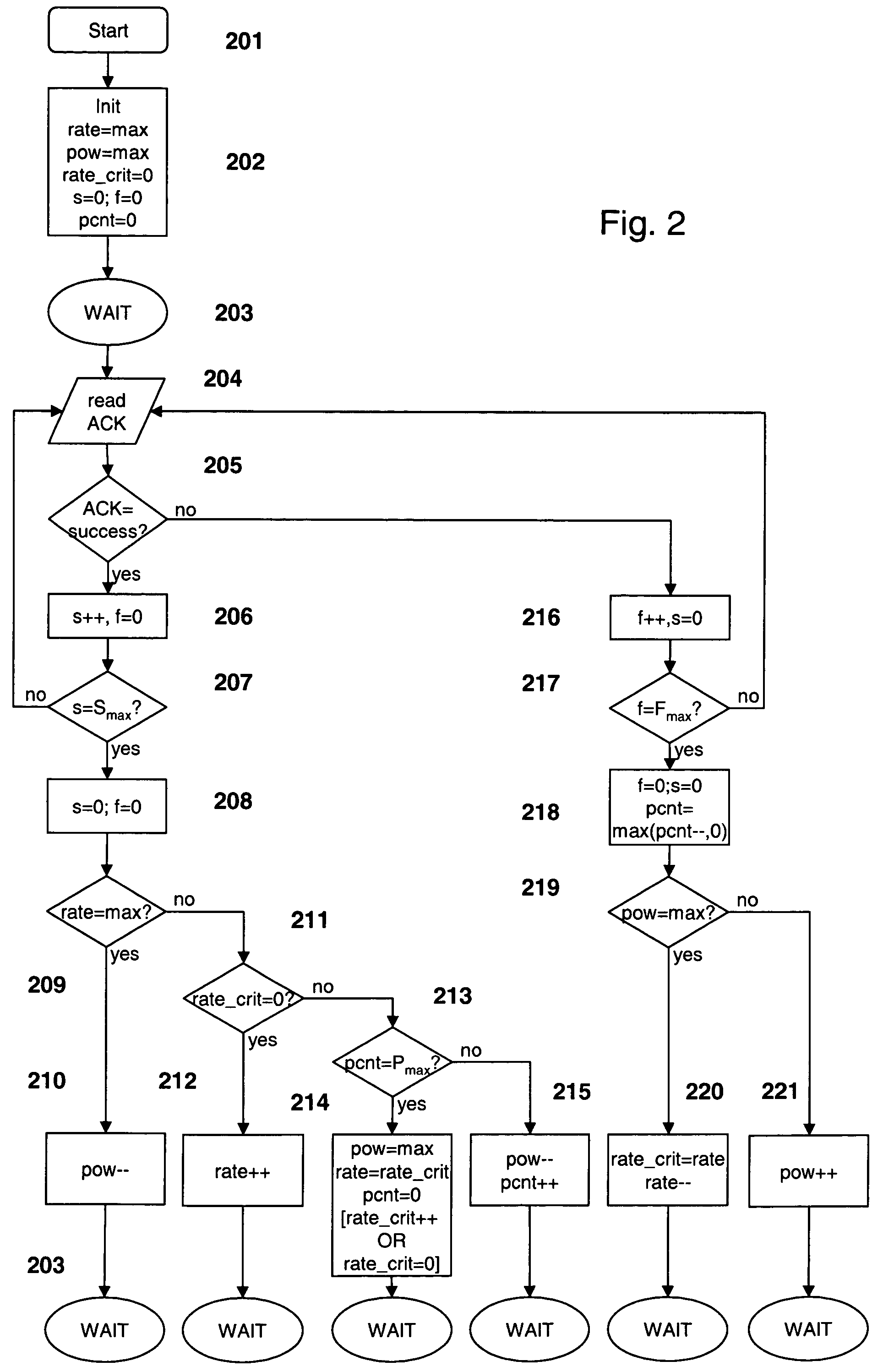Adapting transmission parameters in a transmitting node of a data communication system to the current link quality of a data communication channel
a data communication system and transmission parameter technology, applied in the field of adapting transmission parameters to the current quality of a transmission channel, can solve the problems of low signal-to-noise ratio (snr) value at the receiver, reduced throughput or even total loss of communication, and reduced throughput, so as to reduce the transmit data rate and increase the transmit power level. , the effect of fast use of predefined values
- Summary
- Abstract
- Description
- Claims
- Application Information
AI Technical Summary
Benefits of technology
Problems solved by technology
Method used
Image
Examples
first embodiment
[0051]FIG. 2 shows a self-explaining schematic illustration of a flow diagram as it is applicable by the transmitting station 1 in the control logic unit 17 for a throughput performance mode. The presented mechanism allows to estimate qualitatively the changing link quality and to adapt dynamically the transmission parameters R, P. As mentioned above, in this mode it is tried to support the highest possible data rate. Therefore, after Smax successful transmissions (i.e. it can be assumed that the link quality has improved) the transmit data rate is increased until the maximum rate is reached. If the transmit data rate cannot be increased further, the transmit power level is then reduced.
[0052]In case of Fmax failed transmissions, it is tried first to increase the power level and keep the rate at its current value. The rate is only reduced if the transmit power has already reached its maximum level. The critical value rate_crit takes into account the case where a data rate cannot be...
second embodiment
[0064]FIG. 3 shows a self-explaining schematic illustration of a flow diagram as it is applicable by the transmitting station 1 for the power saving mode. In the power saving mode it is tried to use the lowest possible transmit power level, and to only optimize the transmit rate when the power level cannot be further decreased. The flow diagram corresponds to the flow in FIG. 2 and is the dual operation of the “throughput performance” mode with the following dualities: rate replaced by power, increase operation replaced by decrease, min replaced by max, rate=min, and pow=min. Instead of locking the critical value for the data rate rate_crit the value for power pow_crit is locked, pcnt is replaced by the rate counter rcnt, the counter limit is Rmax. Hence the critical operations are described as follows: If a certain power does not result in a successful transmission even for the lowest possible data rate, the unsuccessful power level is stored as critical value pow_crit in the crit...
PUM
 Login to View More
Login to View More Abstract
Description
Claims
Application Information
 Login to View More
Login to View More - R&D
- Intellectual Property
- Life Sciences
- Materials
- Tech Scout
- Unparalleled Data Quality
- Higher Quality Content
- 60% Fewer Hallucinations
Browse by: Latest US Patents, China's latest patents, Technical Efficacy Thesaurus, Application Domain, Technology Topic, Popular Technical Reports.
© 2025 PatSnap. All rights reserved.Legal|Privacy policy|Modern Slavery Act Transparency Statement|Sitemap|About US| Contact US: help@patsnap.com



